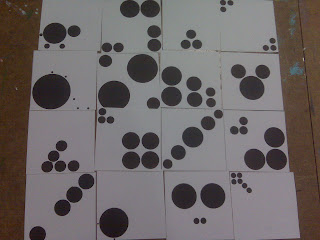I would have put the questions too but I lost the paper. sorry
1. 1. I don’t know the name of it but the most enjoyable this which I saw at the Menil was the pendulum outside the entrance of the main building. The clean lines and perfect proportions of the piece embody mastery of a chosen medium. The knowledge of the works weight is a wonderful contrast to the seemingly effortless way in which it sways in the breeze.
2. 2. I’m not sure if there was anything that I would have described as disturbing. I might say the works of Picasso might fit this description best. However, my knowledge and distaste for the artist and his chosen style may be the true reason behind me saying this.
3. 3. Once again I would have to say the pendulum. This piece is very much my taste and style, in fact the moment I saw it I instantly began thinking of what it would take to make something similar and where I could possible hang such a large piece.
4. 4. This may be outside of the parameters of the question but the thing which most interested me was the museum itself. I love free museums they afford one the opportunity to slow down and study works, also the idea behind the neighborhood portion of the museum is wonderful.
5. 5. I think the main building was near perfect. This is mainly to do the ceiling and how it was designed to allow natural light in to show the works as best as possible.


































